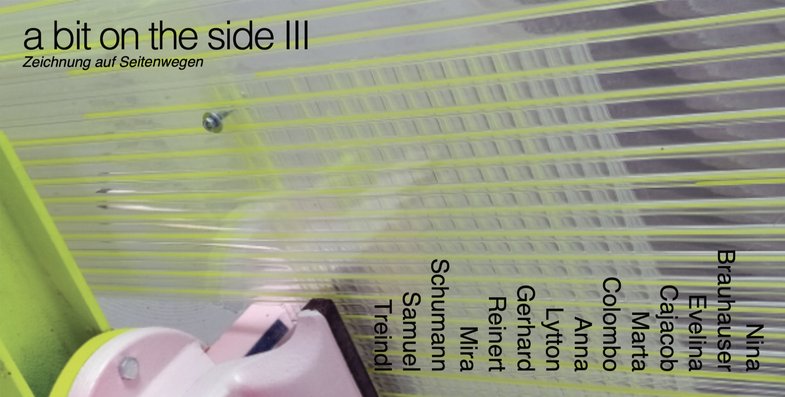
Take a pencil and draw: these are fixations of a moment in its fleetingness and intensity at the same time. Drawers, painters, sculptors, object artists, often also dancers and musicians use this medium again and again. They all use a drawing as a snapshot or to explore and investigate thoughts and topics. Due to its directness and particularly close proximity to its author, however, a drawing always has a special intrinsic value.
The concept of this exhibition "a bit on the side III - Zeichnung auf Seitenwegen" starts with drawings showing furthermore results to another way. The focus is on a drawing access, changing itself forward or by its special creating process, already carrying the change within itself to open other areas like colors, text, objects getting three-dimensional, getting sound or words, beginning to move in reality or in mind.
"a bit on the side III - Zeichnung auf Seitenwegen"shows such kind of works. Works in which a drawing is the starting point, the point at which it ends, and at the same time the focus is, because it thoroughly takes new paths, detours, side paths, using other areas and artistic expressions and can expand itself.


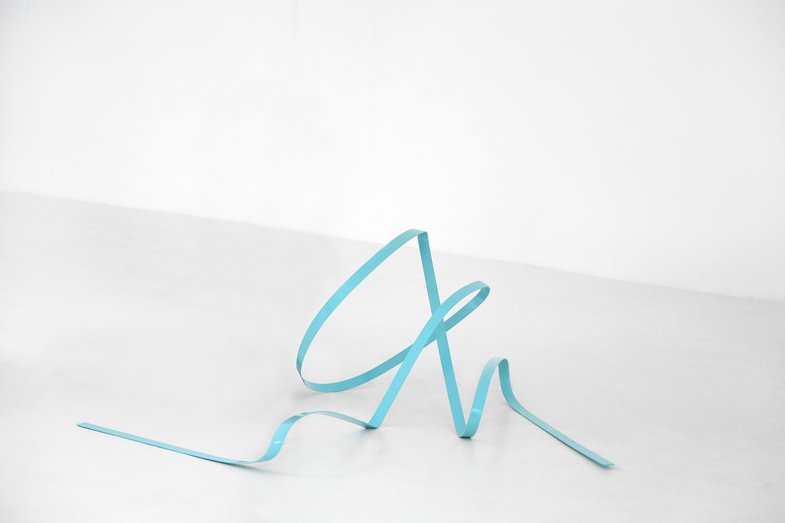
In my work, photographed drawing / photographed sculpture and sculpture are at each other's disposal as referents. The idea of a line of movement is equally the origin of both. Both formulations find their final form within the process. The quotation, the sign formulated in drawing, which finds its final form of representation in the hermetic closure of the surface of the photographic material, becomes in the sculpture an autonomous statement in space, detached from the sketch of thought. The transformation processes within the works constantly renegotiate what is to be assigned to the sign itself and what to the medium's inherent regularities. In the photographic works of the "Converted Drawings" the white of the paper is both space-forming for the drawn body and a substitute for the body itself, in the photographic sense the source of light that simultaneously illuminates and makes visible. Photography is a medium that simulates. The works may at first glance elude classification in a concrete medium. They are photographic tableaus that simulate painting, relief, object or drawing behind their surface. The moment of uncertainty that arises when viewing the works, in that not only the attribution but rather the distinction between original and copy, image and likeness, reality and imagination, becomes impossible, liberates the image from its frame of reference. Both the photographic and the sculptural works exist as self-referential signs. The sculptures develop directly from movement; in their authenticity and clarity they serve me as antipodes to the photographically visualized construction of reality.
Over the past 30 years, the Swiss artist Evelina Cajacob (b. 1961) has been producing a tranquil oeuvre comprising objects, drawings and video works. Her art is often driven by a dialogue with space, close engagement with material, the theme of movement and the various dimensions of time. Some of her works relate to concrete situations while others reflect her memories. But all are suffused with a refined sensuality. At the same time, the moments captured here subtly arouse reflections that lead beyond the here and now.
The work "BergZeichen" was conceived in 2017 for the art project Arte Albigna in Bergell, where it was shown for the first time in a mountain hut at 2,500 metres above sea level. “With her video installation, Evelina Cajacob finds an expression for what has preoccupied her in her previous oeuvre: the line, repetition, manual activities. Drawn lines are a recurring motif for Cajacob, and in the video they now gradually leave behind their accustomed two-dimensionality. Forming different shapes and structures, they invite diverse associations and interpretations. Mountaineers, for example, may be reminded of the rope used for climbing in the mountains. But the ‘mountain signs’ in the video are above all ‘three-dimensional and moving drawings’ by the artist.” (Claudia Klammer)
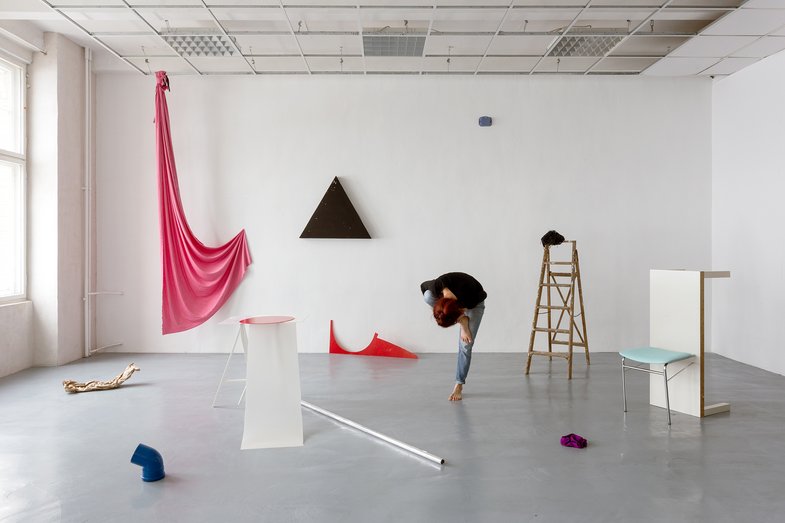
I am very fascinated by the medium drawing and its emancipation and potential. I use this medium also to work in a real space and I define my installations as a „Drawing in Space“.
„The Voice of Drawing“ deals intensely with formal and visual strategies between experimental drawing, composition, sculptural processes and scenography. For „Scenographic Laboratory (2020)„ and „The Voice of Drawing (2020)“ I’ve been working with participatory practices. Visitors could move, change, modify materials and objects proposed. What is important is that they were invited and encouraged to reflect about topics such as composition, assemblage and aesthetics of space. January and February 2021, because of the Pandemic situation, I had to work alone in the installation space.
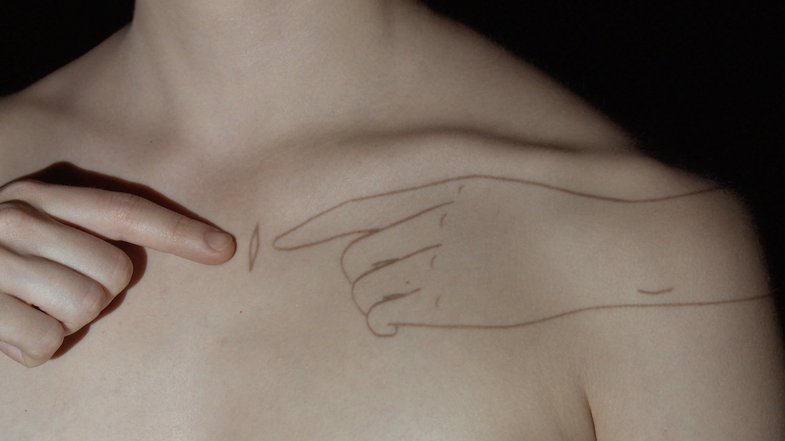
To touch and be touched, to reveal and conceal. Pencil lines exploring skin, an inner world made visible on the body’s outer layer. Movements and gestures become manifestations of the relationship between the body and my drawings.
Music: Mike Majkowski
Camera: Marie Zahir
Performance: Susanne Grau
Sound mixing: Gerald Schauder
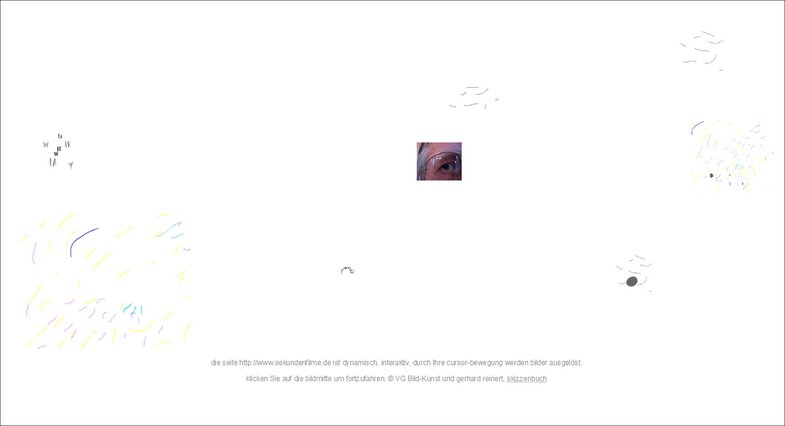
Films within seconds are constitutional to the intermedia drawing approach of Gerhard Reinert. Since the beginning of the internet boom in the years of 2000 he produced interactive films, changing their appearance while moving the cursor over the screen. Multidimensional movements with lines, points, letters und more complex pictures are shimmering, pulsating and extinguishing on the screen to show new micro cosmos.
sekundenfilme.de include moments of sketching, the twinkling eyelid, an interactive drawing-book with elementary sketches of windows, tables and chairs, and links to further experimental films as "leporello", "the sponge bag", "flying lines" and "nerve impulse".
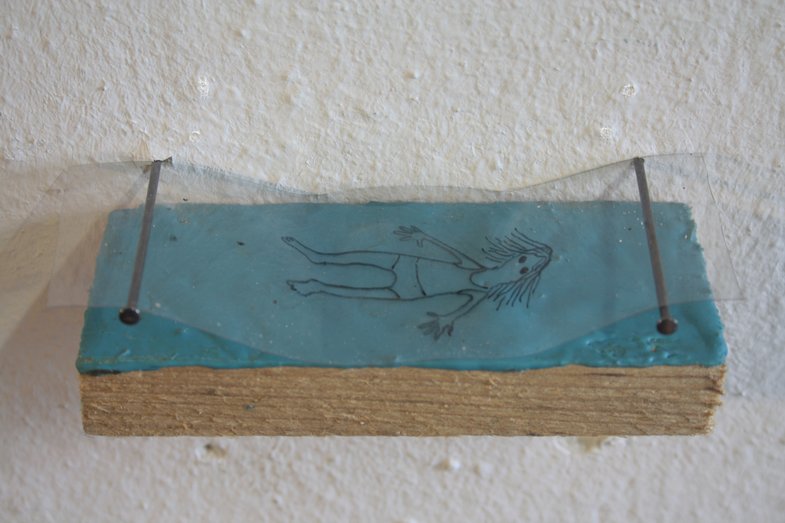
The working series "New Stories" consists of small installations, drawings, slide objects and texts. The individual elements interweave, flow into and cover each other. Drawn or plastic figures, animal materials (like furs) and everyday objects, create – when arranged together - to strange
constellations, which confront the viewer with strange situations and become a story that reveals new contents - but never brought to an end. The new story itself only arises in and through the viewer. It is the viewer who develops this layering into a story and becomes part of it.
The texts are written on slides, at a distance from the objects and walls and detach themselves from the material, from the tangible - unspoken (or unspeakable) words in space, sneak into us and form a contradiction and -secretly- our view.
The material collages combine these words, images, materials and associations, capture the complexity of human situations and experience, and make them accessible to the viewer. At first glance, seemingly familiar role allocations, figure types and constellations, as they are introduced into and anchored in our everyday life, are questioned and made impossible. Clarity begins to waver and to dissolve.
Intimacy and nakedness, security and threat, good and evil, doers and victims – they lose their clarity, blur, flow into each other, and the question arises as to whether they are perhaps even one at the same time – united in discord.
www.members.dokom.net/mira.schumann/Seiten/Ausstellung00.html
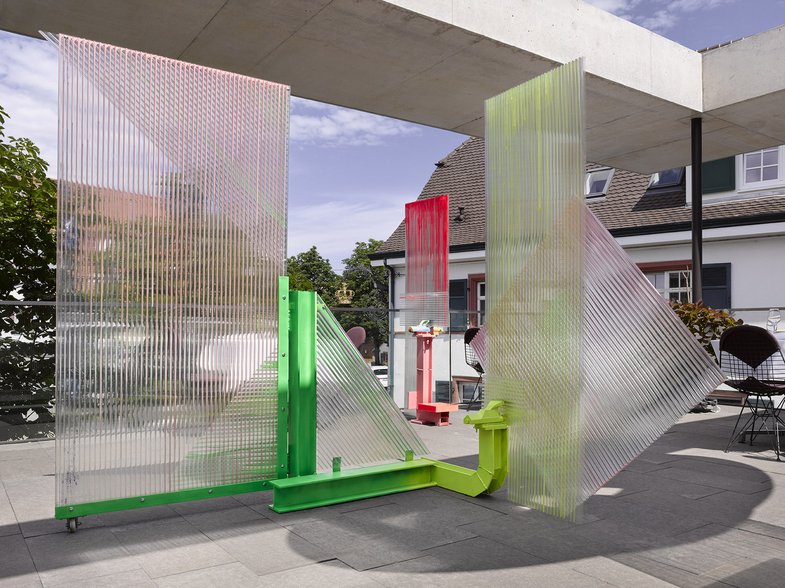
After training as a wood turner, Samuel Treindl first studied design and then fine arts in Münster at the Kunstakademie with Ayşe Erkmen and Mariana Castillo Deball. Treindl has been represented in numerous solo and group exhibitions, such as the exhibition "Production Bubble" at Kunsthalle Münster in 2017, and participated in Emscherkunst 2016, among others. Treindl has received numerous awards, such as the working grant of the Stiftung Kunstfonds, the Northwest Art Prize 2019, the project grant Künstlerdorf Schöppingen, the project grant Kunststiftung NRW, as well as nominations for the Design Award of the Federal Republic in 2014 and 2016. In addition to his own artistic work, he teaches as part of various workshops and teaching assignments. He currently lives and works in Münster. His works are participatory and process-oriented and move freely between sculpture, design, action art and architecture.